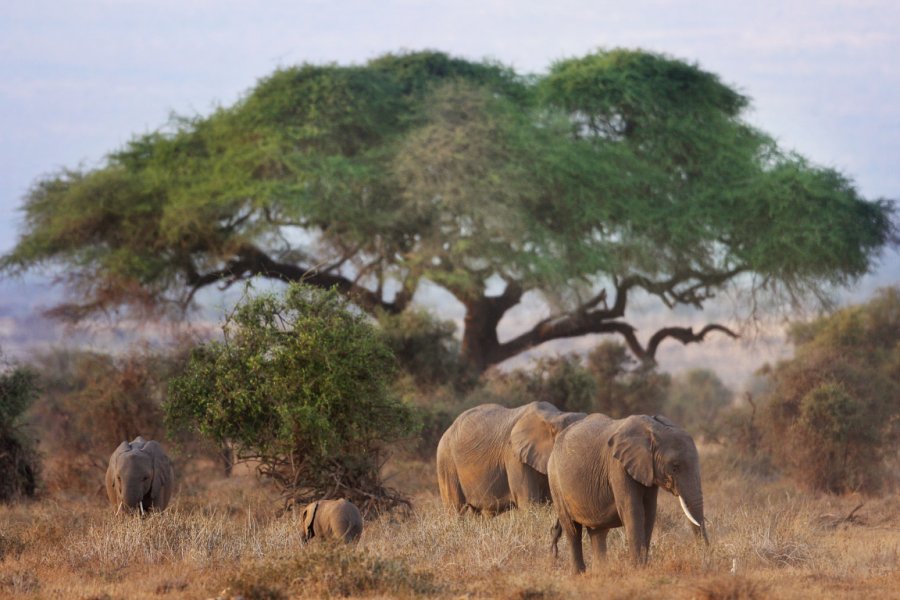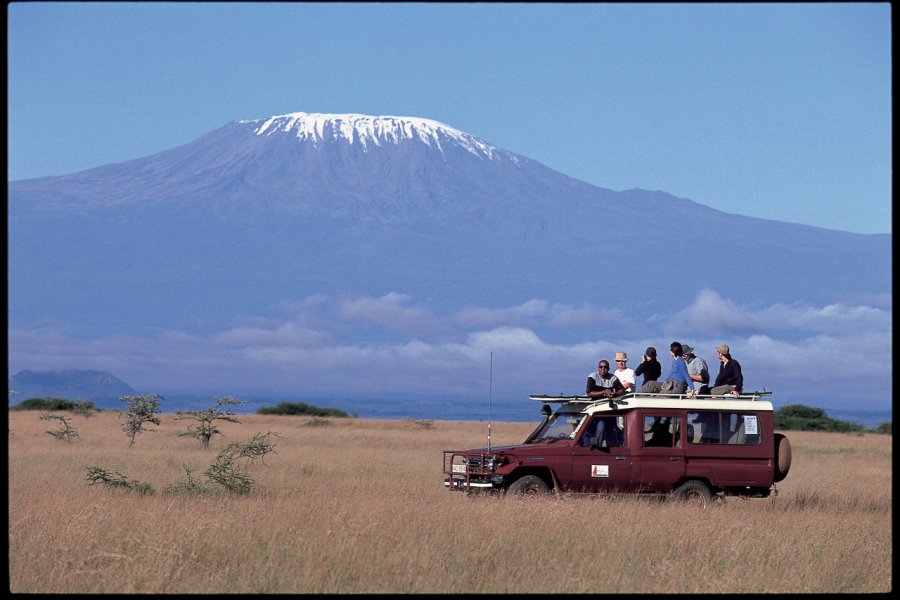Travel Guide Amboseli National Park
Find an accommodation
Advertising
Amboseli, "salt dust" in Maasai, is a land of contrasts. Despite its often arid and dusty appearance, the park has a source that until recently was thought to be inexhaustible: the eternal snows of Kilimanjaro. The water filters through hundreds of metres of volcanic rock before gushing into the heart of the park, creating vast swampy areas. Amboseli's impressive dust is made up of volcanic ash from Kilimanjaro. During dry spells, curious mirages, sometimes punctuated by animal silhouettes, appear in the dried-out bowl of the lake and dozens of dust devils rise into the sky.A few meters away, buffaloes and elephants splash around in the marshes among aquatic plants and egrets. This variety of landscapes has allowed the development of a particularly rich fauna. Zebras, antelopes, gazelles, wildebeest, giraffes, buffaloes and elephants are everywhere.The permanent presence of water also attracts a large number of birds (kingfishers, eagles, falcons, pelicans, herons, jacanas, egrets, ibises...).Felines are much more difficult to observe. Caracals, servals, leopards, cheetahs and lions live in the park, but their numbers have greatly decreased and it is very rare to see them. In the 1980s, several male lions were killed by the Maasai, as a sign of their disagreement with the government's policy in the area. Cheetahs, on the other hand, have suffered from too many tourists and have had to change their hunting habits, which has led to a decline in the birth rate.These two examples show the fragility of this ecosystem, now in danger. The park is suffering from several ailments that threaten its existence in the medium term. The drought of the late 1980s and early 1990s only impoverished an already poorly fertile soil that was suffering from salt water intrusion. Alkaline water seeps to the surface of the soil and deposits a thin film of salt, which has devastating consequences for the flora. Added to these natural problems is the constant flow of tourist minibuses. By driving off the tracks, the vehicles have only made the situation worse: they have hindered the development of young shoots. It is now strictly forbidden to leave the tracks under penalty of heavy fines. Last but not least, we know that due to global warming, the ice on Kilimanjaro has decreased by about 80% over the last century.Because it is relatively small, although surprising, two nights and full days are enough to apprehend the best of Amboseli Park. Of course, if you want to be lulled by its enchanting atmosphere, there is no question of days or weeks: you will never tire of this special little piece of Africa.
What to visit Amboseli National Park?
Suggested addresses Amboseli National Park
Weather at the moment
Advertising
Organize your trip with our partners Amboseli National Park
Transportation
Book your plane tickets
Car Rental
Boat rental
Accommodation & stays
Find a hotel
Holiday rental
Find your campsite
Tailor-made trip
Immersion travel
Services / On site
Activities & visits
Find a doctor











